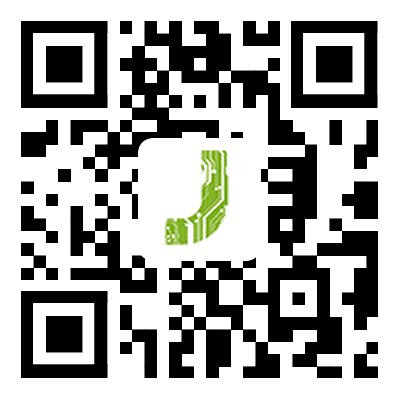 English
English-
 English
English -
 Español
Español -
 Português
Português -
 русский
русский -
 Français
Français -
 日本語
日本語 -
 Deutsch
Deutsch -
 tiếng Việt
tiếng Việt -
 Italiano
Italiano -
 Nederlands
Nederlands -
 ภาษาไทย
ภาษาไทย -
 Polski
Polski -
 한국어
한국어 -
 Svenska
Svenska -
 magyar
magyar -
 Malay
Malay -
 বাংলা ভাষার
বাংলা ভাষার -
 Dansk
Dansk -
 Suomi
Suomi -
 हिन्दी
हिन्दी -
 Pilipino
Pilipino -
 Türkçe
Türkçe -
 Gaeilge
Gaeilge -
 العربية
العربية -
 Indonesia
Indonesia -
 Norsk
Norsk -
 تمل
تمل -
 český
český -
 ελληνικά
ελληνικά -
 український
український -
 Javanese
Javanese -
 فارسی
فارسی -
 தமிழ்
தமிழ் -
 తెలుగు
తెలుగు -
 नेपाली
नेपाली -
 Burmese
Burmese -
 български
български -
 ລາວ
ລາວ -
 Latine
Latine -
 Қазақша
Қазақша -
 Euskal
Euskal -
 Azərbaycan
Azərbaycan -
 Slovenský jazyk
Slovenský jazyk -
 Македонски
Македонски -
 Lietuvos
Lietuvos -
 Eesti Keel
Eesti Keel -
 Română
Română -
 Slovenski
Slovenski
What is the difference between an integrated circuit and a PCB?
2023-05-10
PCB features:
PCB (Printed Circuit Board) is a circuit substrate composed of many electronic components and connecting wires. It has the advantages of good electrical performance, compact structure, lightweight, and low cost. It is a basic component commonly used in electronic products. PCB has good insulation performance, heat resistance, corrosion resistance, impact resistance, anti-electromagnetic interference, and other characteristics so electronic products have better performance and reliability. In addition, PCB has good heat dissipation performance, which can effectively relieve the heat of electronic components and reduce the temperature of electronic products, thereby prolonging their service life. In addition, PCB also has the advantages of easy processing and compact structure, which makes it more widely used in electronic products.
PCB products and various component assembly parts are designed and produced in a standardized manner, so these parts are also standardized. Once the system fails, it can be replaced flexibly, quickly, and conveniently, and the system can be quickly restored to work. Of course, more examples can be given. Such as making the system miniaturized and lightweight, and high-speed signal transmission.
Using modern management production, scale (quantity), standardization, automation, and other production can be carried out to ensure the quality consistency of PCB.
PCB reliability is high. Through a series of inspections, tests, and aging tests, the PCB can be guaranteed to work reliably for a long time (use period, generally 20 years).
For various performance requirements of PCB (physical, electrical, mechanical, chemical, etc.), PCB design can be realized through design standardization, standardization, etc., with high efficiency and a short time.
PCB products are not only convenient for standardized assembly of various components but also can be automated and large-scale mass production. At the same time, PCB and various component assembly components can also be assembled to form larger components, systems, and even the whole machine
A relatively complete test method, test standard, various test equipment, and instruments have been established to detect and identify the qualification and service life of PCB products.
For decades, the high density of PCB boards has been developed with the improvement of integrated circuit integration and the advancement of mounting technology.
Features of integrated circuits:
Integrated circuits have the characteristics of miniaturization, low cost, and high reliability, and are an important foundation for modern electronic information technology development. Its miniaturization characteristics make electronic products smaller and more powerful, and become an important driving force for the development of electronic products. Due to the miniaturization characteristics of integrated circuits, they can replace traditional electronic components, making electronic products smaller in size, lighter in weight, and more powerful in function, while improving product reliability and stability. In addition, the low-cost characteristics of integrated circuits also make it an important boost to the development of electronic products, which can greatly reduce the production cost of electronic products, so that more consumers can buy more electronic products. It is not only widely used in civilian and industrial electronic equipment such as televisions, radio recorders, computers, etc., but also in communications, remote control, and military affairs. Using integrated circuits to assemble electronic equipment, its assembly density can be increased by tens to thousands of times compared with transistors, and the stable working time of equipment has also been greatly improved.
The difference between PCB board and integrated circuit:
Integrated circuits generally refer to the integration of chips. For example, the inside of the CPU on the motherboard and the North Bridge chip is called integrated circuits, and the original name is also called integrated blocks. The printed circuit board refers to the printed soldered chip on the circuit board, as well as the PCB we usually see.
The integrated circuit (IC) is soldered on the PCB board; the PCB board is the carrier of the integrated circuit. The PCB board is printed (Printed circuit board, PCB). Printed circuit boards are found in almost every electronic device. If there are electronic parts in a certain device, printed circuit boards are mounted on PCB of various sizes. In addition to fixing various small parts, the printed circuit board's main function is to connect the various parts above electrically.
In layman's terms, an integrated circuit is a general-purpose circuit integrated into a chip. It is a whole. Once it is damaged inside, the chip will also be damaged. The PCB can solder the components by itself, and the components can be replaced if it is broken.
For more information, please pay attention to JBPCB。

X
We use cookies to offer you a better browsing experience, analyze site traffic and personalize content. By using this site, you agree to our use of cookies.
Privacy Policy



